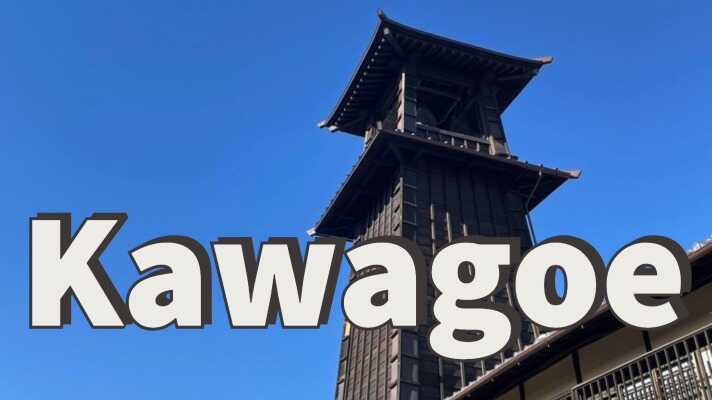Welcome to Kawagoe, a captivating city steeped in history and brimming with cultural treasures. Located just a short distance from Tokyo, this charming destination offers a plethora of exciting activities and attractions for visitors to enjoy. From iconic landmarks to serene temples, and from traditional residences to tantalizing street snacks, Kawagoe has something to offer every traveler. Join us as we embark on a journey to discover the must-visit places and experiences that make Kawagoe a delightful destination worth exploring. Now, let’s dive into some of the fascinating highlights that await you in Kawagoe.
Toki no Kane(Bell Tower)
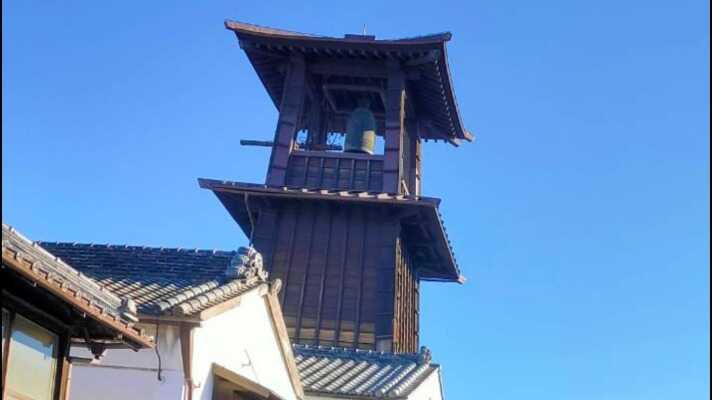
A symbol of Kawagoe, the Toki no Kane bell tower stands tall in the city center, proudly announcing the passing hours since its construction in the 17th century. Take a moment to marvel at this iconic landmark and perhaps catch the enchanting chimes as they resonate through the streets of Kawagoe.
It is said to have been modeled after Edo’s Bakufu system of ringing bells throughout Edo City to tell the time. The height of the building there is 16 meters.
It has been frequently destroyed by fire until now. So, the current “Toki no kane” is the 4th generation. It was repaired by a Kawagoe carpenter the year after the fire that broke out in Kawagoe in 1893.
It is generally known as the Toki no Kane (Bell of Time), but locals often call it the “Kanetsukido” (Bell Tolling Hall). The bell tower was designated as a tangible cultural property by Kawagoe City in 1958, and was selected as one of the “100 Sound Sceneries of Japan” in 1996.
In the old days, the bell-ringer would manually ring the bell at a certain time, but now it is a mechanical structure. Now the bell rings at 6am, noon, 3pm and 6pm.
If the weather is good, it is very beautiful, and the night light-up seems to be wonderful. When we went, it was very sunny as shown in the picture, so I was able to see the bells of time very beautifully.
It is located in the center of the Kurazukuri Street, so please stop by if you have an opportunity. You can get there in 13 minutes on foot from Hon-Kawagoe Station and 25 minutes from Kawagoe Station. Under the Bell of Time tower is the precinct of Yakushi Shrine, which is said to be beneficial for curing illnesses, especially eye diseases.
Hikawa Shrine

Immerse yourself in the tranquility of Hikawa Shrine, a sacred place with a history spanning over 1,500 years. Explore the beautifully landscaped grounds, adorned with torii gates and serene ponds, and pay your respects at the main shrine dedicated to the Shinto deity of matchmaking and harmonious relationships.
Kawagoe Hikawa Shrine is a power spot that is worshipped as a god of marriage.
Kawagoe Hikawa Shrine was built in the 2nd year of Emperor Kinmei’s reign, about 1,500 years ago in the Kofun period. Since the construction of Kawagoe Castle by the father and son, Michizane and Doshan Ota, in 1457 during the Muromachi period (1336-1573), the shrine has been revered as the guardian deity of the castle area and the chief guardian of the domain. The shrine has been worshipped as a god of marriage since ancient times, and the five gods enshrined here are said to be the reason why people have been able to get together with each other.
There are five gods: Susanowo-no-mikoto and Kiinadahime-no-mikoto. Susanoo-no-mikoto and Kiiinadahime-no-mikoto are the descendants of this couple, and are also known as the gods of marriage in Izumo Taisha. The other two gods are Ashinazuchi-no-mikoto and Tenazuchi-no-mikoto, the parents of Kiinadahime-no-mikoto. Because the gods of Kawagoe Hikawa Shrine are made up of family members and include two married couples, they have been worshipped as gods of marital bliss and matchmaking.
Kawagoe Hikawa Shrine has an amulet for marriage that can only be obtained there, which is called the “En-musubi-dama,” It is limited to 20 per day. These are made by a priestess who purifies herself, picks up pebbles one by one, wraps them in a linen net, and every morning the priest purifies the pebbles before making them.
When you meet the person you will spend the rest of your life with, you and that person should come back to this shrine and return it to the shrine. It is said that you will receive a special talisman praying that your relationship will last longer and be stronger.
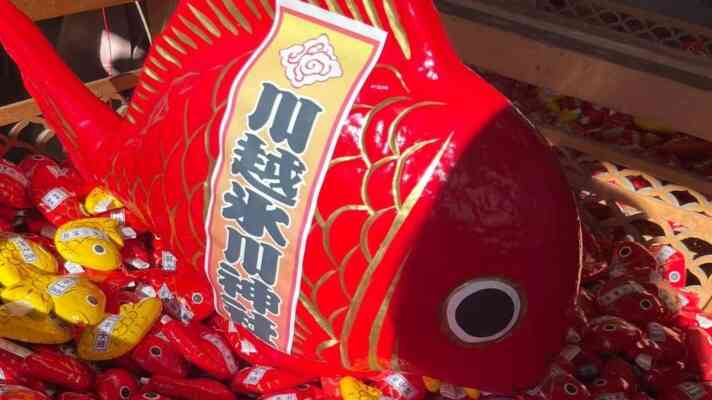
As we proceeded to the back of the shrine, we found an unusual type of fortune. It was called “Tai-mikuji”. Unlike other shrines, this fortune is not cast by hand. This omikuji was very fun because I could catch the color of my favorite sea bream by myself. You use a special fishing rod to catch the fortune.
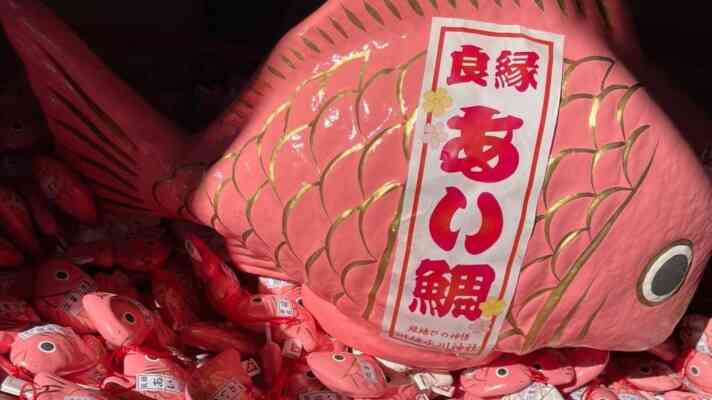
There were two types of Tai-mikuji. The red sea bream is the “forever safe sea bream fortune.” The pink sea bream is called “Aitai-mikuji,” which is an interesting fortune. The sea bream fortune can be taken home, so you can display it at home or make it into a key ring or strap as a good luck charm. It is also said that doing so will help you to attract a wonderful fate.
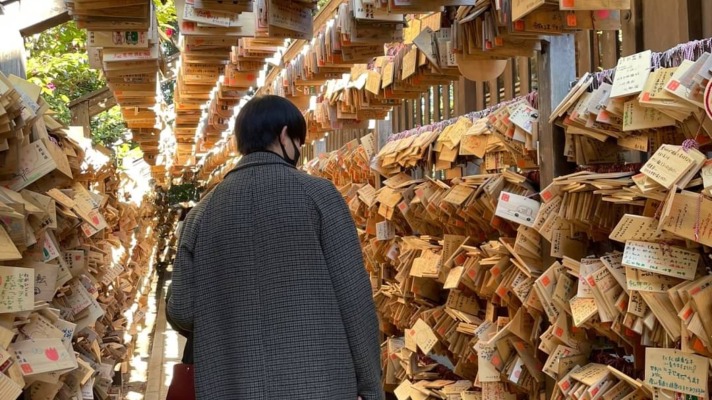
After drawing the omikuji, we went through the “Ema Tunnel”, a specialty of Kawagoe Hikawa Shrine. Inside the Ema Tunnel, the top, left and right sides of the tunnel were filled with “ema (votive picture tablets) for marriage. There are more than 30,000 ema dedicated to the shrine. If you tie an ema with your wish written on it and go through the ema tunnel, your wish will come true.
There are various events depending on the season, such as a school bag purification ceremony during the spring, and marriage wind chimes in the summer. You can see wonderful scenery whenever you visit.
Renkeiji Temple
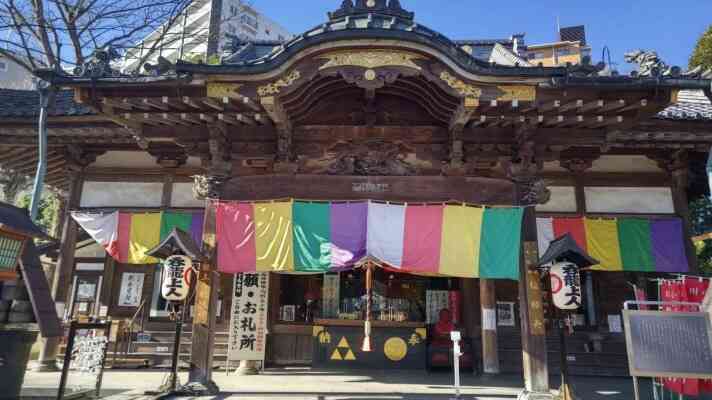
Step into the peaceful ambiance of Renkeiji Temple, known for its stunning architecture and serene Zen gardens. Take a leisurely stroll through the temple grounds, admire the meticulously crafted wooden structures, and find solace in the Zen meditation practices offered here.
Renkeiji Temple is located about a 10-minute walk from Kawagoe Station, on the way to the brewery townscape and the Okashiya Yokocho. It is a historical temple of the Jodo sect that was built in the Muromachi period.
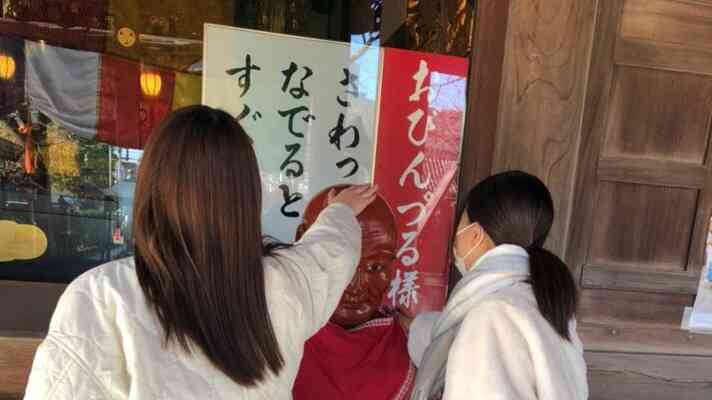
The Buddha we are touching in the photo is “Obinzuru-sama”. It is said that when a worshiper touches the body like a bottle, illnesses are cured, and when the worshiper touches the head, we become smarter. I have been suffering from stiff shoulders recently, so I have been stroking the shoulders of the Obinzuru-sama.
Also, there are yakisoba shops and dumpling shops in the precincts. I couldn’t eat when we visited, so I want to eat when I go next time.
Osawa Residence
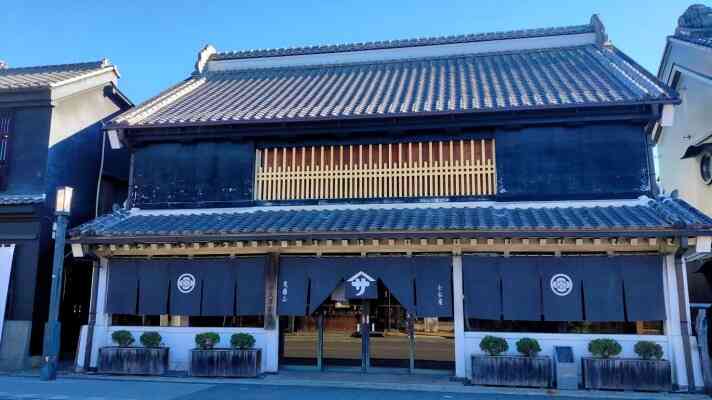
Experience the traditional lifestyle of the samurai era by visiting the Osawa Residence. This well-preserved historic home showcases the elegant architecture and refined aesthetics of the time. Explore the tatami-mat rooms, immaculately maintained gardens, and gain insights into the lives of the esteemed Osawa family.
The Osawa Residence is a building on First Avenue. It is the oldest Kurazukuri structure in Kawagoe and is a historically important building. It has been designated as an important cultural property in Japan.
It is a storehouse-style building built in 1792 by Nishiimura Hanemon, a wealthy merchant of Omiya, who was a fabric merchant who sold kimonos. Kawagoe folk crafts are sold on the first floor. The outside walls were originally white, but the white walls were painted black to protect them from air raids, so you can see the white walls under the peeling parts.
The roof tiles are lightweight, wavy tiles piled on top of each other. The roof has a sloping surface with an angled shape. It is called “Kiritumazukuri.” The building has two floors. In particular, the front windows on the second floor are the only ones in Kawagoe with clay lattices.
Another characteristic of this building is that it is not a warehouse, as is often the case in the Kurazukuri of Kawagoe, but it is a storefront. It is a large store with a frontage of 11 meters and a depth of 7 meters.
Kawagoe Kumano Shrine
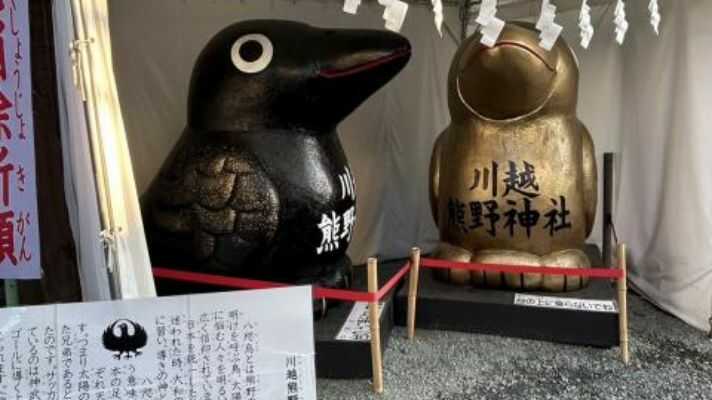
Discover the spiritual side of Kawagoe at the Kawagoe Kumano Shrine. This sacred shrine, dedicated to the deities of Kumano, offers a serene atmosphere amidst towering trees and tranquil surroundings. Take a moment to offer your prayers and experience a sense of peace and serenity.
Kawagoe Kumano Shrine was founded in 1590. It is believed to offer three types of blessings: good luck, good fortune, and good luck charms. Each shrine has its own symbol. The symbol of this shrine is the yatagarasu (three-legged crow). Yatagarasu is a crow with three legs. Yatagarasu is a three-legged crow, widely believed to be a deity that provides divine guidance. Yatagarasu is also closely associated with the sun and is called “the bird that brings the dawn. The logo of the Japan Football Association is also yatagarasu. This logo was created with the wish that players would head for the goal with the soccer ball.
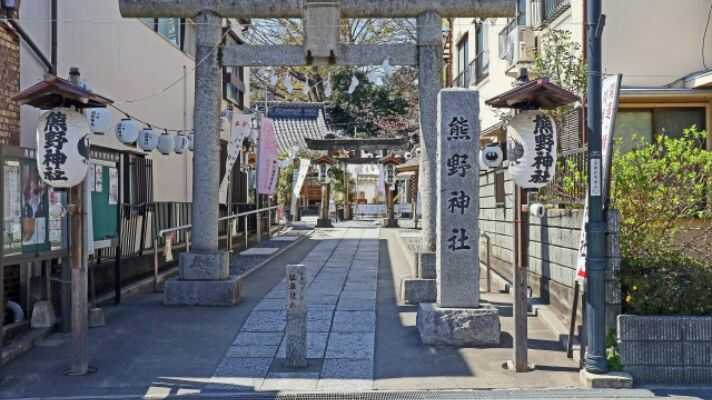
Kawagoe Kumano Shrine is located at the east exit of Honkawagoe Station, turn left and go straight. It is a 5-minute walk from the station.
Kashiya Yokocho
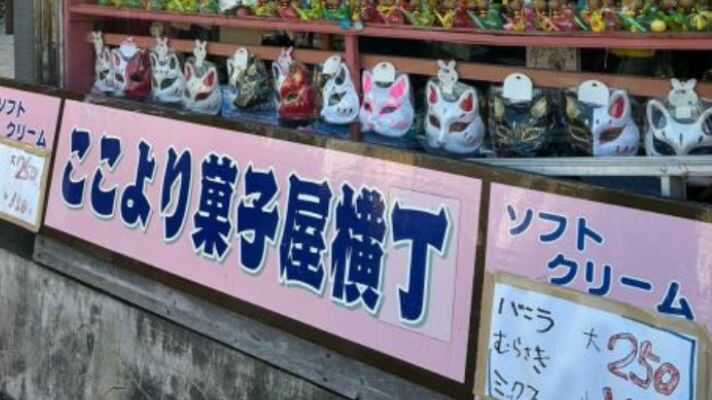
Indulge your taste buds and unleash your inner child at Kashiya Yokocho, a nostalgic street lined with charming candy shops. Sample a variety of traditional Japanese sweets, known as “dagashi,” and savor the flavors of old-fashioned confections that have delighted generations.
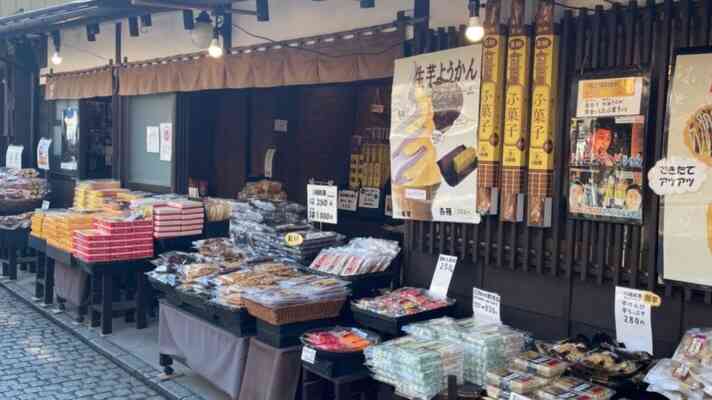
Here, you can buy “dagashi” sweets, which we used to eat as children, while feeling the old streets. When we were children, dagashi were very popular, which we could buy even with our small allowance. Japanese people still buy dagashi as children, high school students, university students, and even now as adults. This is because, for us, candy is nostalgic and reminds us of our childhood.
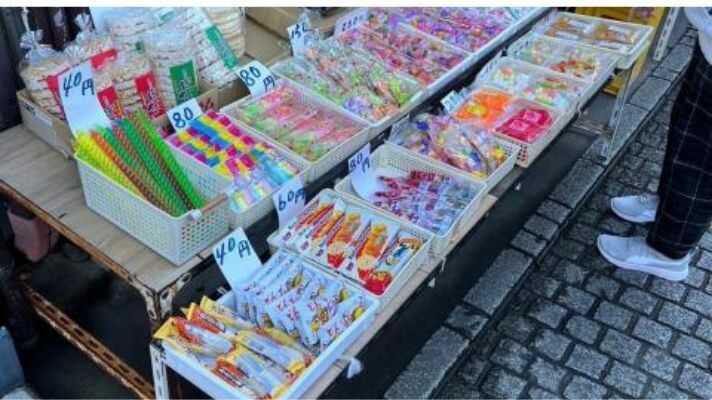
The history of this place is long, dating back to the Meiji era. In those days, each shop made and sold its own candy. In 2001, this place was awarded a “かおり風景100選”(100 Aromatic Landscapes) for the smell of Dagashi and dumplings.
Eat Street Snacks (Candy Alley)
In Kawagoe, there are many places to eat and drink. Walking through the streets of Kawagoe, you can find various stores and buy whatever food you like.
Slider Burger/Mrs.Hamburger
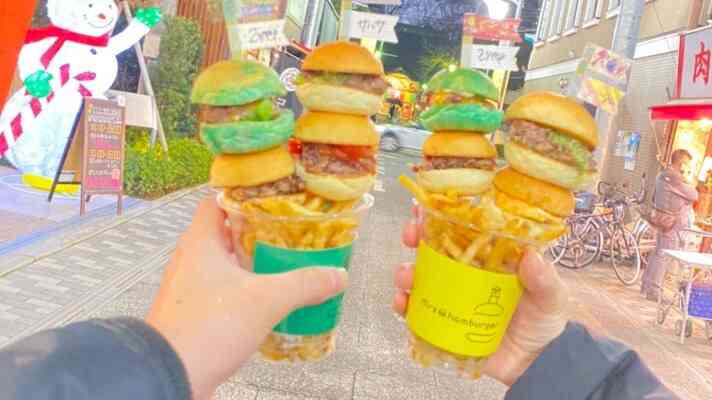
A slider burger is a miniature version of a hamburger. It is said to be so small that it slides down your throat, hence the name. The small buns are custom-made by a famous bakery, and are delivered fresh every morning. The vegetables are mainly from Saitama Prefecture, and the hamburgers are made from Sendai beef. The fries are made with corn flour, which keeps them crispy even when carried around. The slider burgers are very popular among teenagers as they are Instagram-worthy.
PLACE: 7 min from Honkawagoe Station
Imo Koi (Kasho Umon)

There were 6 “Kasho Umon” stores in Kawagoe. We went to the Kashiya Yokocho branch.
The good smell and the words “limited quantity, for eating while walking” caught my attention, and I ate a sweet called “Imo Koi”. “Imo Koi” is a manju made of sweet potatoes and sweet red bean paste wrapped in a dough made of yam and glutinous rice flour. It was not too hot, and the texture was chewy and soft.
It wasn’t too sweet like I expected, and the gentle sweetness of the bean paste and sweet potatoes seems to go well with green tea. It has been certified by Saitama Prefecture as an “Excellent Brand Product of Sainokuni”. “Imo Koi” is loved by many people, from small children to the elderly.
However, Imo Koi is very similar to “Ikinari Dango”, a specialty of Kumamoto Prefecture. The Kawagoe specialty “Imo Koi” may be inspired by it.

I ate “Kawagoe bracken rice cake” there. These are made in a shop and are sold in a limited amount. It was moderately sweet , and the flavor was good, too.
There is a stylish eat-in space in the shop and is most suitable as a place to take a break when you get tired of walking.
Place: Kashiya Yokocho
Pandango(Kurazukuri Honpo Ichibangai)
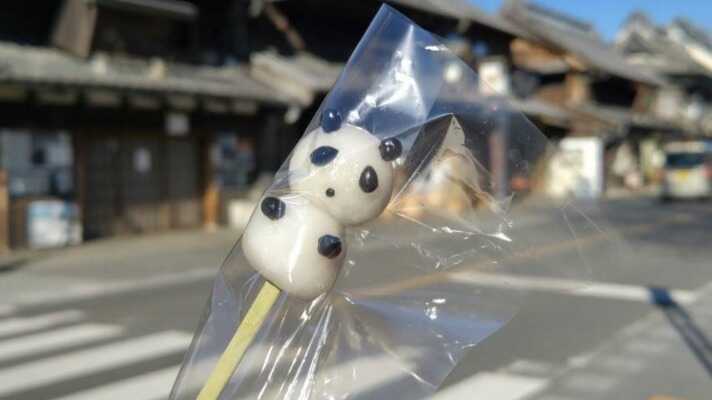
The dumpling that looks like a cute panda in the photo is called “Pandango” (250 yen). It is sold in limited quantities per day at “Kurazukuri Honpo Ichibangai”. It is a perfect product to eat and walk. The chewy and sticky mochi contained red bean paste, which was sweet and delicious. This shop also has a cafe, so if you visit Kawagoe, be sure to visit it.
Place: Place: Kawagoe Ichiban Gai
Hiyashi Ame (Udagawaya)
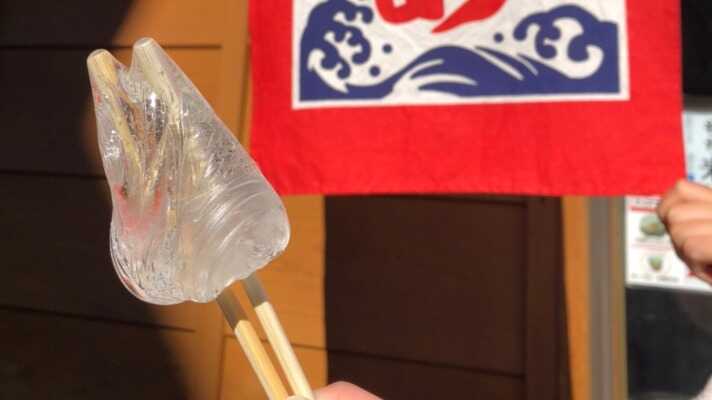
In Udagawaya, additive-free non-colored starch syrup made from rice is sold. As you can see, it was beautiful with its transparence. The starch syrup is ready to be eaten when it becomes white using two bamboo sticks. It was very thick sweetness, and it was pleasant to knead it.
Place: Near Kashiya Yokocho
Osatsu chips (Koedo Osatsuan)
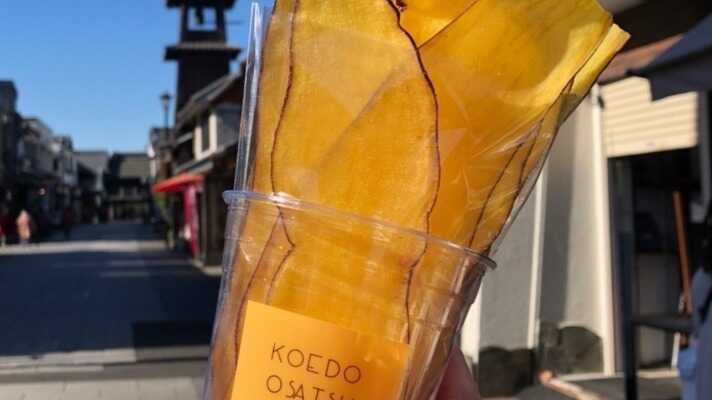
“Osatsu chips” at “Koedo Osatsuan” is one of Kawagoe’s specialties that seems to be popular on SNS and has been featured in the media. They are fried sweet potatoes. You can choose one dip sauce from several types. We chose the most popular salt butter, which was also light. The volume amount was larger than I had imagined. It took time to finish eating. It was very delicious.
PLACE: Near Toki no Kane
Kawagoe Pudding
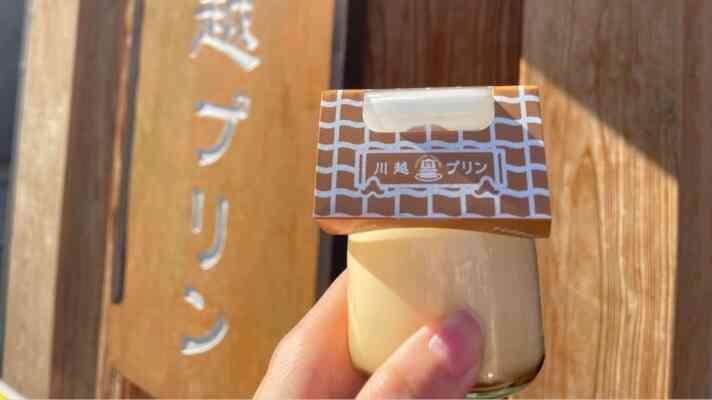
Kawagoe pudding has three flavors: smooth (regular), Kawagoe sweet potato, and Kawagoe matcha, as well as seasonal products such as strawberry and yuzu. Smooth ( regular ) is 390 yen, Kawagoe sweet potato, Kawagoe matcha, and seasonal limited products are 420 yen each. Kawagoe Pudding also has soft ice cream other than pudding. These flavors are “Pudding Flavor” and “Kawagoe sweet potato Mont Blanc Flavor.”
Place: Kawagoe Ichiban Gai
Benzaiten

I ate a rice cake stuffed with sweetened bean jam and fruit in “Benzaiten”. Can you feel the freshness of the fruits from the pictures? These jewel-like fruits are purchased fresh from the market every morning. These carefully selected seasonal fruits are so fresh and juicy that they will fill your mouth! The “gyuhi” that surrounds the fruit is also carefully selected. The dough is not too sweet to accentuate the sweetness of the fruit, so you can feel the elegant sweetness of the rice. No preservatives or emulsifiers are used, so it is safe for children.
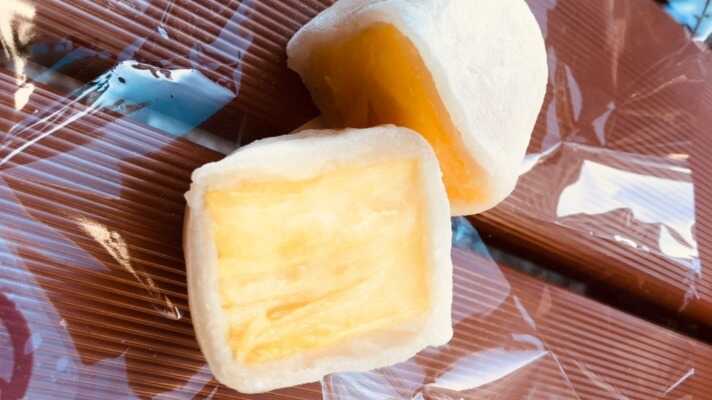
I purchased “a fully-ripened pineapple” for 550 yen. A thread and the manual of the how to cut the Daifuku were included in the bag, too. A very big pineapple is wrapped. Dumpling wrap of Daifuku and the sweetness of the white bean jam were modest and enhanced the taste of the fresh pineapple.
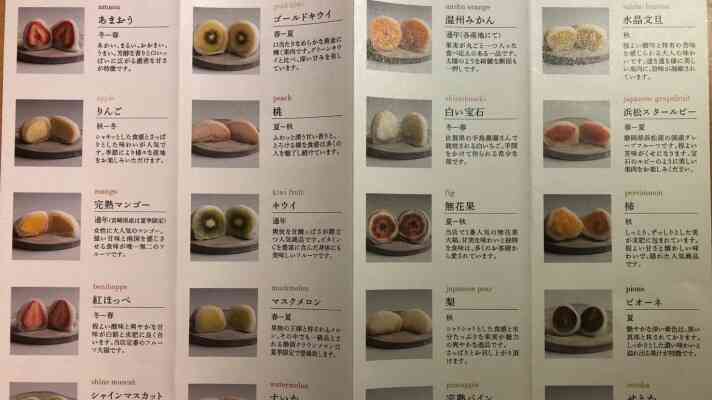
As you can see in the photo, there are a variety of menu items. Why don’t you share with your friends and family and enjoy different flavors? Prices vary from 500 yen to 1300 yen.
You should try Benzaiten’s Daifuku at least once, where you can feel the taste of the ingredients themselves!
Place: Naka Machi
Conclusions
Stay tuned as we delve deeper into these remarkable attractions and uncover even more captivating things to do in Kawagoe. Let the adventure begin!
This article was created in collaboration with students from TKU.
